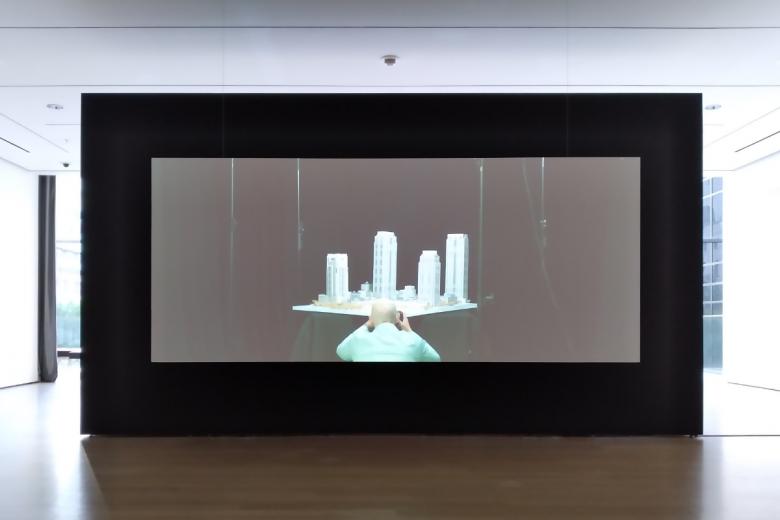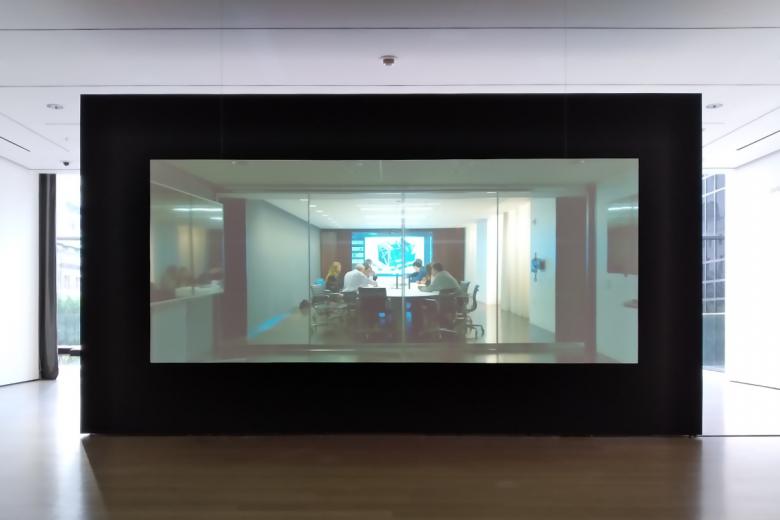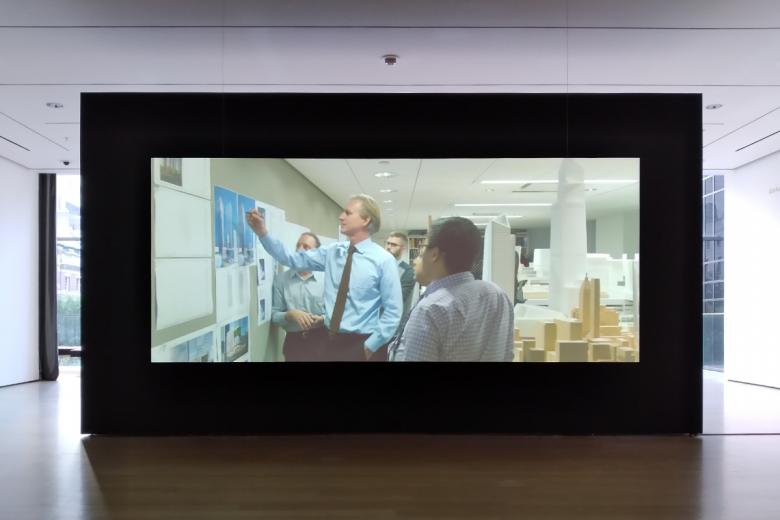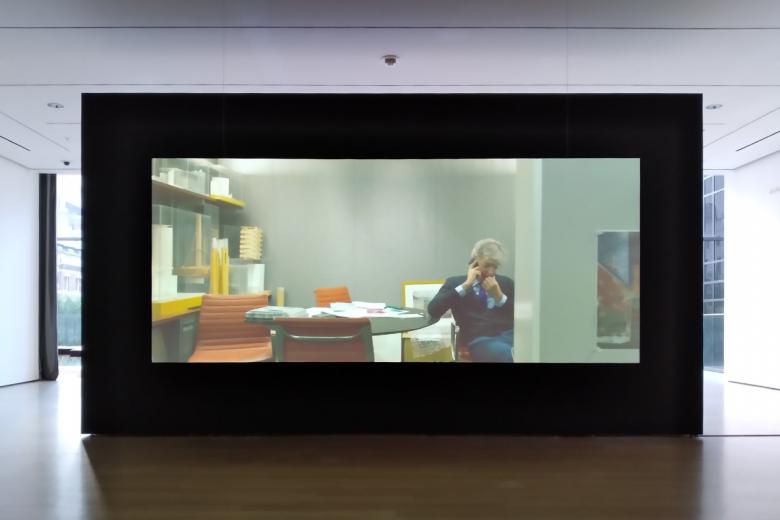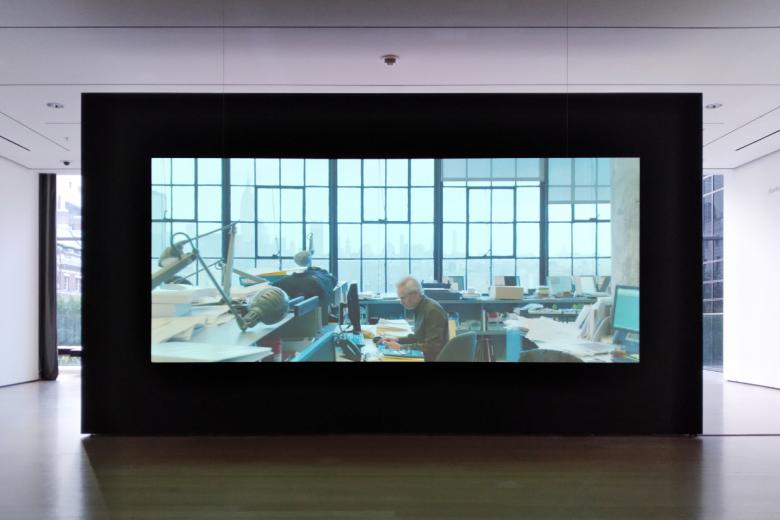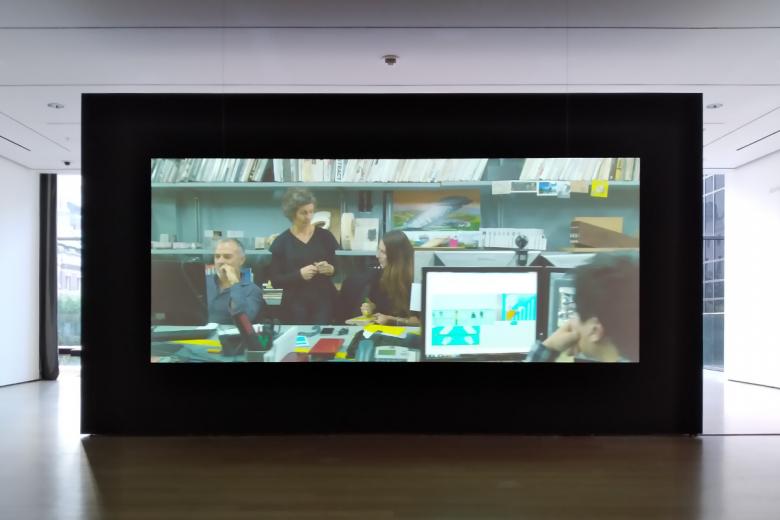Watching 'The Architects' at MoMA
Museum of Modern Art curator Martino Stierli has pulled Amie Siegel's The Architects from the museum's archive, putting the 33-minute film on display in the third-floor architecture gallery until January 2, 2023.
Somehow I missed The Architects when it was shown at the Storefront for Art and Architecture in New York City in November 2014 and when it was shown in Venice the same year. The film was commissioned by Storefront as part of Office US, the US Pavilion at the 2014 Venice Architecture Biennale. According to Storefront, "The Architects cuts transversally through the city of New York, moving through ten architecture studios — from Fifth Avenue to downtown to Brooklyn — unveiling the operational territories and landscapes of global architecture production."
The surprise of coming across the film inside MoMA yesterday was heightened by something I saw just moments earlier: A display at a Brooks Brothers store featured an old drafting table and stool, rolls of blueprints, and a photo of a well-dressed man; on the glass were the words "the Architects of American Style." Although "the architects" is referring to Brooks Brothers, not literal architects, the way the play on words is illustrated through anachronistic cliches is very much at odds with the way architects are seen working in Siegel's film.
Now, as eight years ago, architects face computer screens, meet in conference rooms, and talk on the phone. The overt display of work captured in The Architects is not much different than other businesses; nor are the spaces of the ten architecture firms a departure from other creative industries. The defining aspects of the studios are the artifacts on display: drawings, models, and other objects produced in the design process. Below are a few peeks at the film that "not only punctures the myth of the singular 'master architect,'" in Stierli's words, "but also poses questions around creative autonomy, the sociopolitics of labor, and the circulation of capital."
